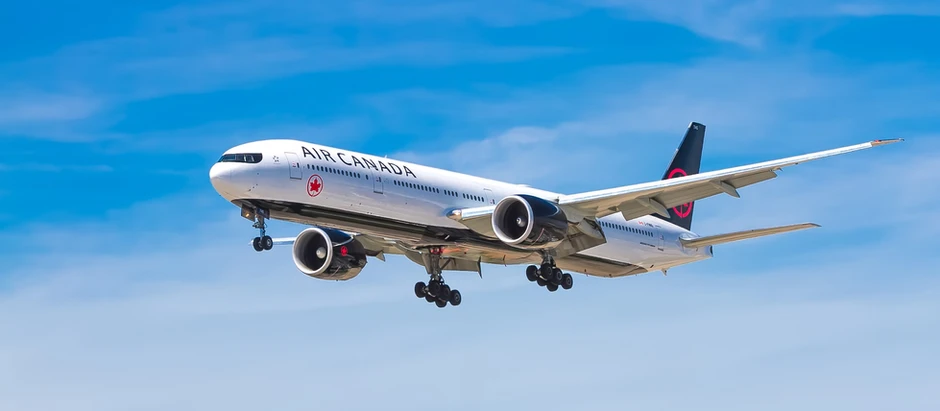Flying doesn’t have to be a hassle. After years of working as airline crew, I’ve learned a few tricks that make air travel smoother, comfier, and far less stressful. Here’s how to fly smarter—without spending extra.
1. Pick your seat wisely—cheap upgrades exist
Not all seats are created equal, and choosing the wrong one can make a flight feel twice as long.
✔ Exit row seats = more legroom, but they don’t always recline. If you’re tall, check SeatGuru before booking.
✔ Bulkhead seats (the ones behind a wall) mean no one leans back into you, but they’re often near the toilets—so expect foot traffic.
✔ Solo travelers: Window seats let you lean against something and sleep. Aisle seats give you more freedom to move. Avoid the middle seat at all costs.
💡 Flight Tribe tip: Checking in late sometimes means free upgrades—gate agents occasionally move passengers to fill business class, especially if you have status with them.
2. Pack light—but smart
The less you bring, the easier your trip. But if you must pack a carry-on:
✔ Use compression packing cubes—they shrink your clothes, giving you more space.
✔ Take advantage of your ‘personal item’—a backpack can hold way more than a handbag.
✔ Bring a change of clothes in your carry-on in case your checked bag goes AWOL.
💡 Flight Tribe tip: Airlines rarely weigh duty-free bags—if your hand luggage is pushing the limit, stash some heavier items in one.
3. Dress for comfort, not Instagram
Airplane cabins are weird. You’ll be freezing, then sweating, then freezing again.
✔ Wear layers. A light jacket or hoodie is a lifesaver.
✔ Avoid tight clothing. Sitting for hours can cause swelling—loose clothes and compression socks help.
✔ Slip-on shoes = easier security checks. Bring thick socks to wear onboard—bare feet on a plane is a no-go.
💡 Flight Tribe tip: If you’re flying long-haul, change into sweatpants after takeoff. You’ll feel way more comfortable.
4. Stay hydrated—coffee and alcohol make it worse
Airplane air is drier than the Sahara. Dehydration = headaches, fatigue, and jet lag.
✔ Drink water before, during, and after your flight. Bring a reusable bottle and fill it up after security.
✔ Avoid alcohol and caffeine—both dehydrate you fast. If you must have a drink, double up on water.
✔ Pack moisturizer and lip balm. Your skin will thank you.
💡 Flight Tribe tip: Coconut water is packed with electrolytes and beats regular water for hydration.
5. Hack your sleep onboard
Getting some rest on a plane isn’t easy, but these help:
✔ Invest in a decent travel pillow. The cheap U-shaped ones don’t work—go for a neck-supporting pillow.
✔ Use an eye mask and earplugs. They’re essential for blocking out distractions.
✔ Avoid bright screens before sleeping. The blue light messes with your body clock.
💡 Flight Tribe tip: If you’re on an overnight flight, eat before boarding so you can sleep straight away.
6. Boarding smart = less stress
How you board affects the entire flight.
✔ Board early if you have a carry-on and want overhead bin space.
✔ Board last if you don’t mind storing your bag under the seat and hate waiting in line.
✔ Use priority boarding if it’s cheap. Some airlines offer it for £5-£10—worth it if the plane is packed.
💡 Flight Tribe tip: Wearing noise-canceling headphones during boarding keeps you sane when everyone’s shuffling to find their seats.
7. Don’t rely on the airline for entertainment
Not all planes have seatback screens anymore, and even if they do, the movie selection is often awful.
✔ Download everything before you fly. Movies, podcasts, books—assume Wi-Fi won’t work.
✔ Bring a battery pack. USB ports aren’t always available or reliable.
✔ Don’t forget a headphone adapter. Many airlines still use two-prong headphone jacks.
💡 Flight Tribe tip: Most airlines let you stream movies for free via their app—download it before you board.
8. Move around—even on short flights
Being stuck in one spot for hours can wreck your body.
✔ Stretch your legs every couple of hours. It helps prevent stiffness and blood clots.
✔ Flex your feet and move your ankles while seated. Keeps circulation flowing.
✔ If you’re in an aisle seat, get up and walk the length of the cabin.
💡 Flight Tribe tip: Compression socks = a game-changer for preventing swollen ankles on long-haul flights.
9. Ask for freebies—you’ll be surprised
Airlines do give out free stuff, but you need to ask.
✔ Blankets and pillows (even in economy).
✔ Extra snacks and drinks—some flight attendants will happily give extras.
✔ Water refills—bring a bottle, and they’ll top it up for you.
💡 Flight Tribe tip: On long-haul flights, some airlines have self-service snack bars in the galley—just go help yourself.
10. Keep your cool—delays and turbulence are normal
Flying can be frustrating, but losing your temper won’t fix anything.
✔ Turbulence isn’t dangerous. Pilots deal with it daily.
✔ Flight delays happen. Have a backup plan, especially if you have a connection.
✔ Be nice to the crew. They control everything from extra snacks to better seats—kindness goes a long way.
💡 Flight Tribe tip: If your flight is delayed more than 3 hours, you might be entitled to compensation.
Final thought: flying doesn’t have to suck
Most people make flying harder than it needs to be. Pack light, stay hydrated, move around, and bring your own entertainment. Stick to these tips, and your next trip will be a whole lot smoother.


